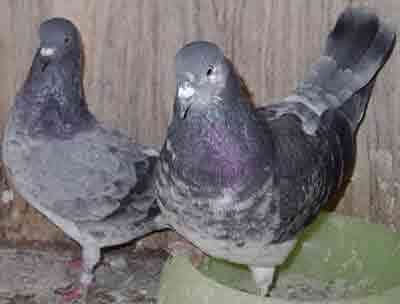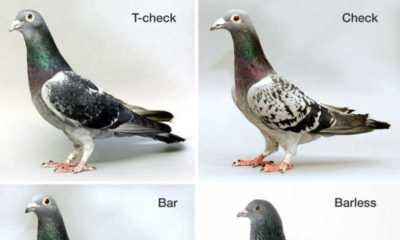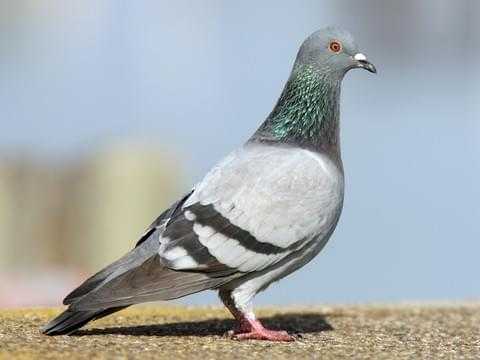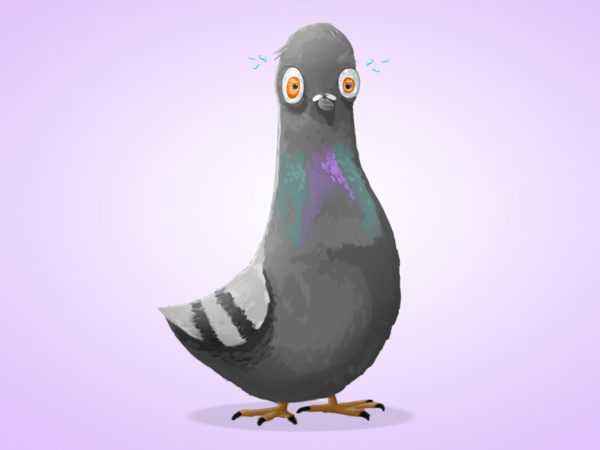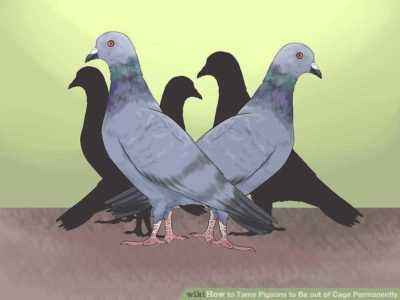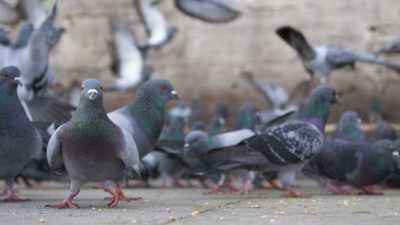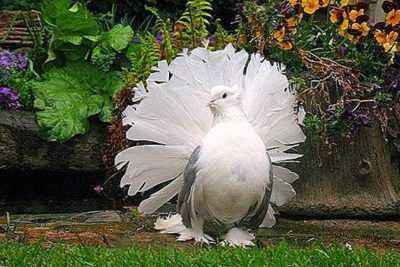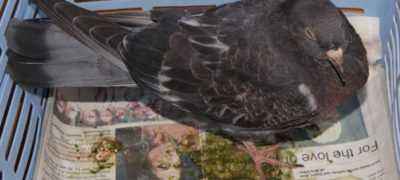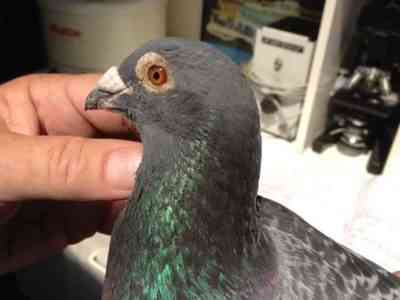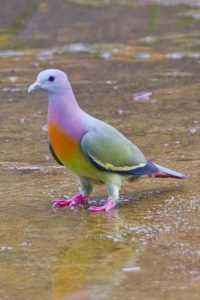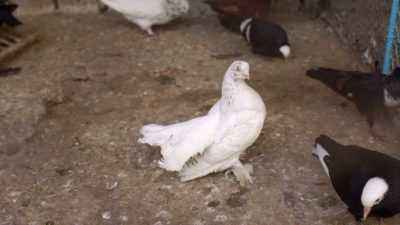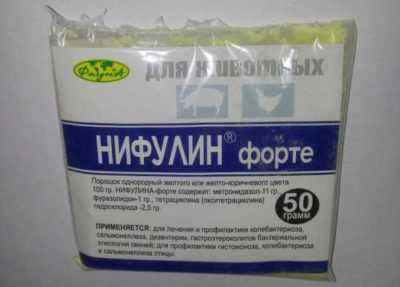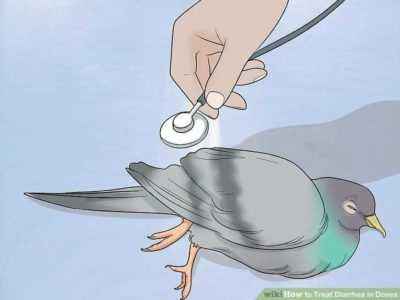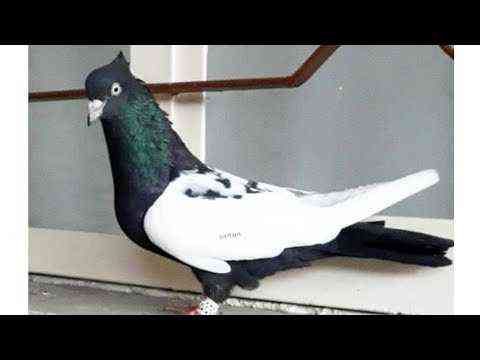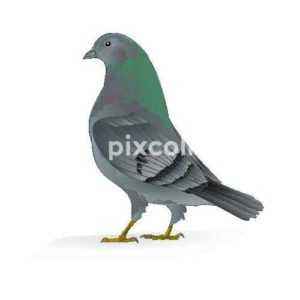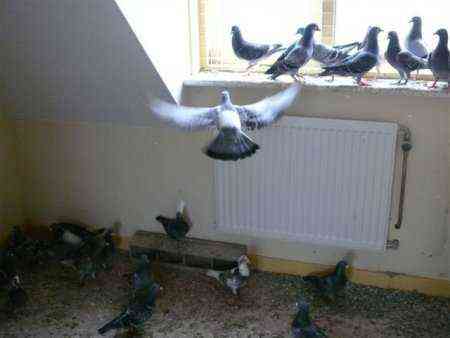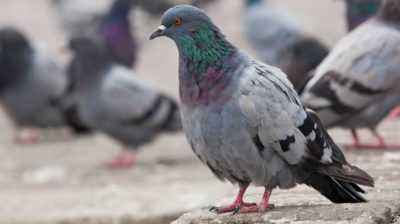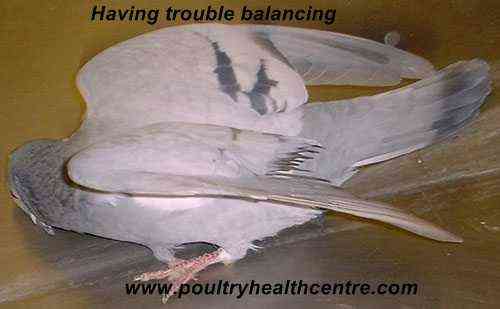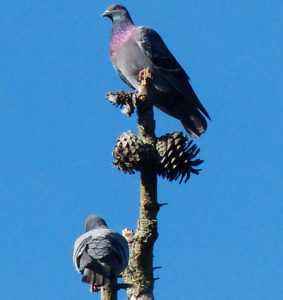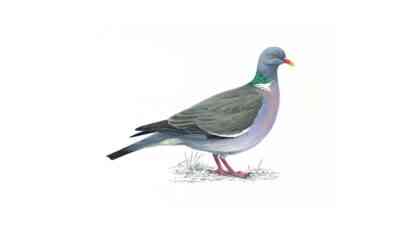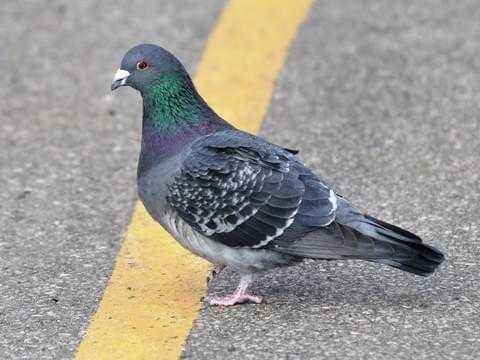Nikolaev pigeons – an old breed that was bred in the south of Ukraine, in the city of Nikolaev. Where their circleless ancestors came from is not exactly known. It is believed that pigeons appeared as a result of crossing breeds brought by sailors from Italy and the Middle East with local wild birds. Initially, pigeons were bred for meat, but over time they began to be appreciated because of the beautiful planning. According to the current classification, pigeons are classified as high-flying circleless breeds.
- Appearance description
- Pigeon colors
- Flight features
- Features of keeping and breeding
- Species of breeds
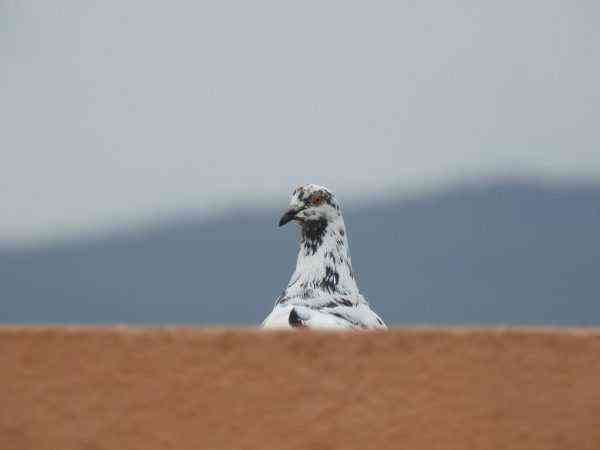
Nikolaev pigeons
Description of the appearance
The structure of the body of Nikolaev pigeons is special, which affects the beauty of planning. The feathers on the wings and tail are elastic and wide, which allows good capture of air currents. On the body, the plumage is thick, dense and smooth, tight-fitting and creating streamlined shapes. The tail and wings are very mobile, and the skeleton is light.
The characteristics, standard and a full description of the appearance of the pigeons are as follows:
- Body 38-40 cm long.
- The angle between the body and a flat surface is 45 °.
- The head is rounded, slightly tapering and lengthens in front.
- The forehead smoothly passes into the crown.
- Hook is not expressed , with a smooth transition to the neck.
- The eyes are small, they can be golden, orange, straw, brown and even black, depending on the color of the plumage.
- The beak is medium or long, but proportional to the head, thin, slightly bent at the tip, a shade from horny to dark gray, the wax is small.
- The neck is short, plump (the female is thinner, than males) with a rather magnificent collar.
- The chest is expanded, slightly convex, with powerful muscles.
- The back, extended at shoulder level, is straight, elongated, the back is in line with tail.
- The wings are rather long, closed, with wide feathers, converge with the tips on the tail, but do not reach its end . The wing is pressed against the body loosely.
- The tail is extended, with 12-16 steering feathers, elongated, flat and straight. At rest it tightly closes, at a height opens with a fan. The plumage is elastic and magnificent.
- The legs are short, without plumage, red-orange.
Pigeons of the Nikolaev breed have a very lively temperament. They are active, they always fly to the sky, while easily adapting to any conditions, they are quickly tamed.
Colors of pigeons
It is worth mentioning separately about the coloring of pigeons of this breed. Since selection was carried out according to flight qualities, folk methods, plumage paid little attention.
Birds are very diverse. White pigeons are highly valued now, they cost more, because they look magnificent and elegant. But other colors are no less beautiful – colored doves are gaining popularity more and more.
So, Nikolaev pigeons can boast of the following colors of plumage:
- Solid: white, black, red, ashen, blue, yellow, a shade of fresh cement. The tone should be uniform, only in blue, ashy and cement a dark belt is allowed.
- Nikolaev colored white-tailed pigeons. The shades are the same, only the ponytails or the extreme feathers on them are white.
- Pockmarked – white mixed with any other.
- Squared or carapace – the body of the pigeons is white, the wings are red, black, blue or yellow.
- Variegated or dark, dark or light. In dark doves, the main tone of the hull has any color, white spots are scattered on it. In light, the main feather is white, and the spots are of any of the possible shades. Sometimes colors are marble type. The tail is white, the extreme feathers are colored, the fringing is sometimes visible.
- Martins are white birds that have colored spots on their heads (red, black, yellow, gray, blue), cheeks, shoulders and back. Feather feathers can be fully colored or white alternate with dark ones.
- Hrivuas are completely white doves with a dark spot on the back of the head.
The beak, eyes, wax and legs change color in accordance with the color. Unacceptable is the mixing of different types of colors. For example, the appearance of white blotches in solid pigeons or insufficiently clear spots in variegated ones.
Flight Features
The soaring styles of Nikolaev pigeons are very different. Butts are best valued, but they are very rare. The fact is that among the pigeon breeders in recent decades, the flight of a butterfly has become popular. The selection of birds went precisely in this direction, and the end qualities began to be lost.
Nikolaev pigeons fly very high. They can rise into the sky to a flickering point or even disappear from sight. Rise up straight, without circles, it is enough for take-off space of 1.5-4 m. Fly alone, and not in a flock. Land in a diameter of 4-10 m from the take-off point. From air it can stay from 2 to 10 hours.
Considering the flight styles, birds are divided into such varieties:
- Nikolaev end pigeons. Take off sharply up in a strict vertical plane, and hover high in the sky with a flickering point. In flight, the wings are set to each other at an angle of 90 °.
- Nikolaev butterflies. When taking off, they constantly flutter their wings, do not stop and do not hang in the air, the tail straightens well. The angle between the wings in flight is 30 °.
- Nikolaev pigeons-larks. Pretty simple flight style. Like butterflies, they flutter their wings, which strongly resembles the flight of a lark (hence the name). Unlike the previous species, larks hang at a height. The wings are set perpendicular to the hull.
- Cirrus pigeons of the Nikolaev breed.This type of flight is significantly different from the previous ones; altitude for it is not the most important characteristic. Sickle doves fly horizontally, and do not billow up like the rest of the breed. Their wing in flight is bent by a beautiful arc (hence the name – sickle pigeons).
The flight styles of the real Nikolaev pigeons largely affect their market and sports appreciation. The first place is taken by Nikolaev end pigeons, then comes the style of butterflies. Crescent pigeons are valued lower because they do not rise to great heights. There is even a debate, such birds are racing or high-flying. The lark style is considered the weakest, such individuals are sometimes not even allowed to be bred.
In order for the birds to fly well, they need regular training.
Features of keeping and breeding
The Nikolaev breed of domestic pigeons is not whimsical at all, therefore its maintenance and feeding is accessible even to beginners. A standard dovecote should be made for birds. It is advisable to equip it in a separate building in the courtyard so that the pigeons have a comfortable roof for take-off. Perchs are placed inside, equiped with nesting places, and exit windows.
You can feed Nikolaev pigeons twice a day: at dawn and before sunset. In summer, birds can get their own food. The diet consists of legumes (yellow peas, vetch, lentils), wheat, flax, rape, acorns. In small quantities give oats, barley, boiled potatoes.It is important to ensure that the pigeons do not recover, otherwise they will lose their flying qualities. Intensive feeding is necessary for birds during the period of hatching and rearing chicks.
Breeding of Nikolaev pigeons also does not cause any special problems. The winged puberty occurs in 4-5 months. At this time, the male and female are placed in a closed box so that they create a pair. Prior to fallow, mature pigeons must not be flown so that they do not mix with other breeds or wild birds. The female lays 2-3 testicles 14 days after mating. Hatching eggs lasts 16-19 days. There is no problem with feeding the chicks in the breed.
All flight breeds need adequate training, pigeons of the Nikolaev breed are no exception. They begin it when the chicks fully fledge, in 30-45 days. Pigeons are trained from April to October. It is advisable to release young birds along with mature ones that have good flight styles. Pigeons are released on a flight in the morning when the sun rises completely. The first workouts should not last more than an hour. All data is carefully recorded in order to select the best birds over time.
Species of breeds
Nikolaev tucherez n rarely used for breeding other breeds. The difference between these pigeons and appearance and flight style. Some breeds have evolved from vysokoletnyh in Cattle. Others had a fight during the flight. Very often the owners are afraid to let out and train the birds, since the losses are quite large (12-47%), so the feathered flyer gradually began to turn into a decorative pet.
Based on Nikolaev’s, such breeds were bred:
- Kirovograd circleless. They are small in size, they belong to the runners.
- Kharkov circle-shaped runners with velvet plumage.
- Melitopol high-flying, inflated and standard.
- Mariupol or Zhdanov’s fighting.
- Ochakov crescent pigeons.
- Rostov stately (moved to Russia from flying to decorative).
- Kiev’s light-headed chubaty, or fireflies, are also considered to be decorative now.
- Donetsk sickly and tall pigeons.
- East-Ukrainian chased .
Colors, style and quality of flight, structural features, sizes of all breeds are different. Unfortunately, Nikolaev high-flying pigeons and breeds, in the creation of which they participated, are now losing their purity. End mills in general have become very rare, some breeders say that such a flight no longer exists.
Pigeon breeding is not as popular as it was several decades ago. Today there are few breeders who know how to train birds well, because they lose their unique age.
